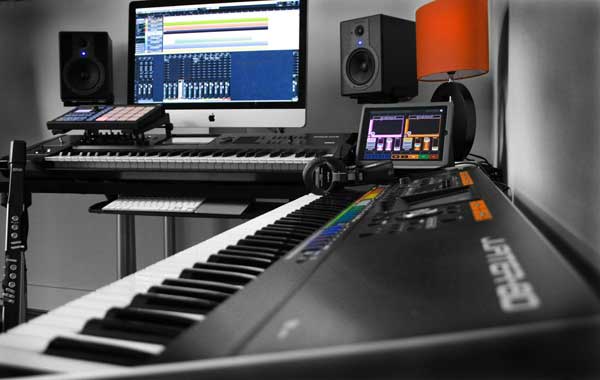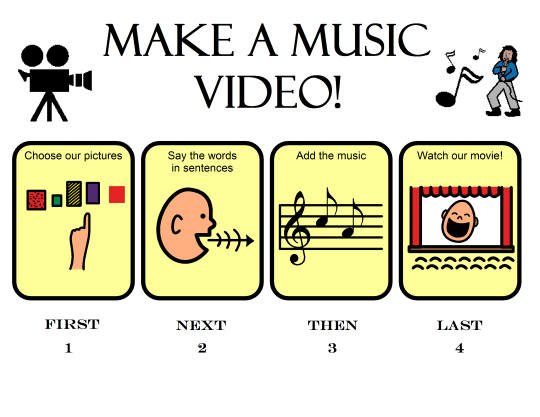How To Make Music
We Make Music. Our mission is to develop innovative solutions that transform how music is composed, taught, learned, and performed. More than a software company, MakeMusic is a collection of people and personalities who share a passion for music. Alas, dance music evolves and changes year by year so you need to constantly learn what the current style and breakdown methods are. Or just ignore those and make your own unique style of dance music with is mostly a better approach. Audiotool isn't a website to upload songs like, for example, Soundcloud. It's a music production tool with its own DAW. Just click the blue 'App' button on the top.
There are many different aspects to making music. In this article, I will cover the basics on how to make your own music. Learn how to make music today!
Whether you are a singer, rapper, or in a band the process of making music is similar.
Here are the different steps involved in how to make music.
How to Make Your Own Music
Step 1: Make a Beat or Buy a Beat
A beat or instrumental is the foundation of a song. Some music artists may start with lyrics first, but often music artists find a beat that inspires them and they write to it.
Option 1: Make a beat
It’s good if you know how to make your own beats because you can save money. But not many people are good at music production, songwriting, and performing. Stick to your strengths.
Option 2: Buy a Beat
Buying a beat may be easier for most of you. There are many talented music producers out there that have spent years developing their craft.
Buying beats allow you to experiment with different types of instrumentals and does not limit you to what kind of beats you can create.
Where to buy beats:
- RocBattle MarketPlace
Pay for quality beats. Look at each beat as an investment.
You don’t want to put your name on crappy songs or bad beats.
You can gain and lose fans quickly with the music you put out.
Related: How to Make Beats ( Beginners Guide )
Step 2: Write Lyrics to Your Song
Once you find a beat, start writing lyrics. There is no one correct way to write songs; you need to do what works best for you.
5 Different Songwriting Ideas
1. Freestyle Lyrics
Sometimes when you hear a beat ideas will just come to you, but in the process of trying to capture and make sense of those ideas, you can get lost, and you will lose those other creative ideas.
So I suggest you record yourself freestyling over the beat to capture the different lyrics, melodies, hooks, and feelings. Then revisit it and make sense of the ideas you have.
2. Use Online Software
Helpful websites like RapPad are created for songwriters. RapPad will analyze your lyrics and give you words that rhyme. It offers a built-in rhyming dictionary, syllable counter, thesaurus, and more.
3. Start with the Hook First
Hooks are usually the most popular part of a song. If you can figure out a hook first, it will often help to lead the direction and theme of a song.
What makes a good hook or chorus?
- Keep choruses simple and easy to remember
- Hooks should summarize the song
- Traditional hooks contain a melody
- Famous choruses get repeated many times
Related: Why We Love Repetition in Music
4. Collaborate
Work with other songwriters. Working with others will bring out different ideas, and you can feed off each others energy.
Sharing ideas will help you to avoid writers block.
5. Write With a Pen & Pad
You may already do this one, but many songwriters these days are writing songs on mobile devices. Try switching it up.
It’s always good to see a complete verse written out on a piece of paper rather than scrolling up and down on a phone.
10 Lyric Writing Tips for Beginners
Here is a great video on songwriting tips for singers.
Song Writing Links
Free Online Rhyming Dictionaries
- Rhyme Zone – Find rhymes, synonyms, definitions, and more!
- Rhymer – Find end rhymes, syllable, double rhymes, triple rhymes and more.
- Rhyme Brain – Type a word and press enter to find rhymes.
- Muse – Rhyming Dictionary.
Rhyming Dictionaries
Mobile Apps
- Evernote – Use Evernote to capture lyrics, song ideas, and audio.
- Hum – Hum organizes all your lyrics and melodies by key, tuning, and mood.
- Multi-Track Song Recorders Apps – Search the app store for apps like this to record vocals over a beat.
- Rhyming Dictionaries: iPhone / Android
Additional Song Writing Tips
- Research popular songs & learn from them. ( Top 100 )
- Write often. The more you write, the better you will get.
- Study Lyrics on Genius.com
Step 3: Record The Song
Once you have a beat and lyrics, you are ready to record a song.
You will need software and audio recording equipment for this.
Here are the 5 basic things you will need to create your own music:
1. Computer – A computer is where you will record and edit songs.
2. Music Software – You will need audio recording software to record and arrange your songs. Popular audio software: Protools, Apple Logic, and Cubase. 15 Free Music Software Programs
3. Headphones– You will need headphones to hear the music as you record vocals.
4. Microphone– You will need a microphone to record your vocals.
5. Audio Interface – The audio interface is what connects your microphone to your computer.
How to Record Music
The videos below cover some different audio recording topics.
Recording Vocal Basics
Covers microphone positioning and microphone pop filter.
Layering Vocals
Related: How To Produce Pop Vocals Like The Pros
Recording Hip Hop Vocals
Rap & Hip Hop Related

How to Compose and Record a Song
How To Make Music Beats
Sand Stone Studios explains how to make music. They create a beat from scratch and record vocals.
Step 4: Audio Editing
Once the audio is recorded, it’s time to edit the vocals. This process involves mixing audio, adding effects, and more.
Mixing Rap Vocals
Mixing Vocals To Sound Upfront
How To Make Musical Instruments
Related: Beat Audio Mixing Tips
What Next?
In most cases when the song is recorded and mixed it’s done right? Yes and no.
I advise you to sit with the song, share it with others for feedback, and see if there are things you can do to make it better.

Some songs are worked on for weeks before they are released to the public.
DJ Khalil shared that the making of Aloe Blacc’s very popular “The Man” took about 2 months to finish.
A popular song can open many doors for you, so do what you can to make it a great song.
Need Graphics to Promote Your Music?
Our store has website and social marketing graphics to help you look professional.
How To Make Music Notes On Keyboard
Create a Music Business
Create a professional website to sell beats, products, and music. Offer music services. View Features »
Do you have tips on how to make your own music? Please share in the comments.
Thanks for reading.
Audacity is a free audio recording and editing application developed by a group of volunteers, published by the Free Software Foundation under terms of GNU General Public License. Audacity is better geared toward performing basic and moderate recording and editing functions such as recording streaming audio from the Internet or recording a digital rendition of analog recording saved on audio cassette or vinyl record. While Audacity can be used for music production, it lacks MIDI functionality.
Preparation
Download the Audacity installer from the Sourceforge website (See Resources) and save it to a directory on the computer’s hard drive. Navigate to the directory location where the Audacity installer is saved. Right-click the installer icon and select “Run As” from the shortcut menu. Follow the prompts to enter the credentials of a user account with administrator rights. Follow the remaining prompts to install Audacity onto the computer.
Connect the electronic music instrument or microphone to the computer’s “Line In” or “Mic In” port. The process of making this connection varies depending on the type of musical instrument or microphone you’re using. Both the “Line In” and “Mic In” ports on the computer are 3.5 mm stereo jacks. Examine the connector(s) with which the instrument or microphone you’re using is equipped to determine what type of stereo adapter is needed to plug the device into the computer’s “Line In” or “Mic In” port.
Double-click the speaker icon located on the right of the task bar in Windows to open the “Volume Control” utility. Make sure the “Microphone” or “Line In” volume level is raised and not muted.
Plug a pair of headphones into the computer’s headphone jack.
Music Production with Audacity
Launch Audacity.
Go to the “Edit” menu and select “Preferences.” On the “Audio I/O” tab, open the Recording “Device” drop-down menu and select the computer’s sound card. Check the box next to “Play other tracks while recording new one.” Click “OK.”
Open the drop-down menu located just beneath the 'Rewind,' 'Play,' 'Record,' 'Stop' and 'Fast Forward' buttons at the top of the Audacity window. Select “Line In” or “Microphone” as the sound source.
Click the red, round record button to initiate active recording in Audacity. Begin playing the instrument or singing your vocals. A wave forms on the audio track when sound is being recorded into Audacity. If Audacity is in active record mode and a long, straight blue line forms during the recording, Audacity is not receiving an audio signal. Go over your preparation again to make certain that the computer is properly set up to receive the audio signal. Click the yellow, square button in Audacity to stop the recording.
Click the record button in Audacity again if you’d like to record another musical part along with the music you just recorded. The new part will be recorded to its own individual audio track. You should hear the music you’ve already recorded, as you play the new part, through your headphones.
Tip

To record an acoustical instrument into Audacity, connect a microphone to the computer then place the microphone near the instrument. Take care to try to reduce the presence of ambient noises when recording sounds in Audacity using a microphone as the sound source.